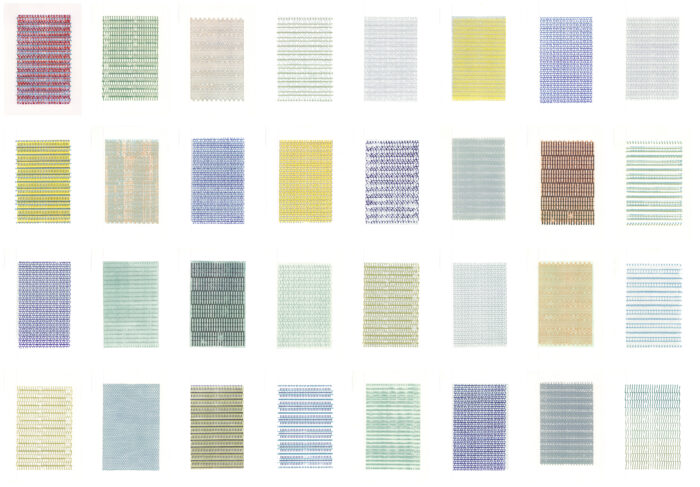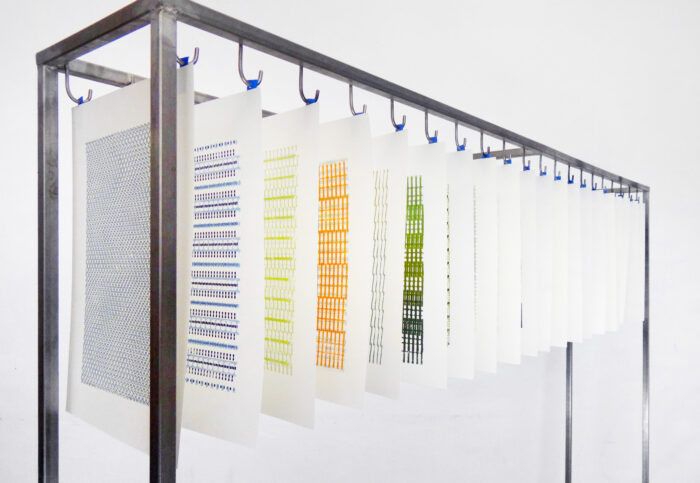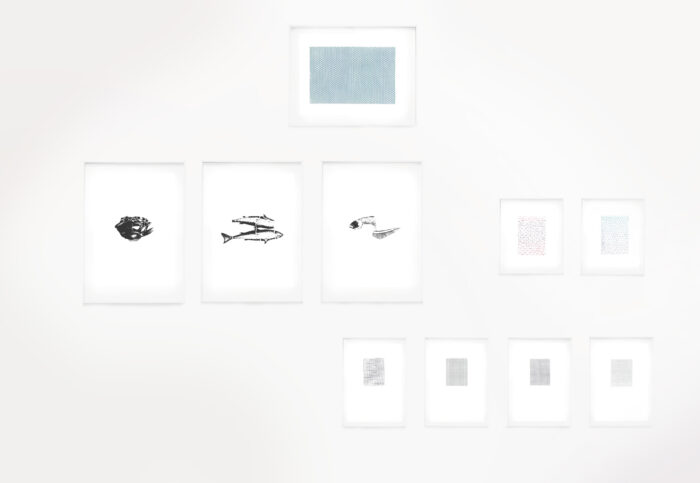Claire Ebendinger
September 9, 2022.
Claire Ebendinger is a French artist working in Halle, Germany. Her practice draws inspiration from the manipulation of objects found in play. She is eager to reconcile her work with the act of play, while considering the seriousness that’s built in, throughout education. As a result, her work oscillates between creating spontaneously and following rules.
Find Claire’s works on her website and Instagram.

I was very impressed by the location and the history of the building. It seemed to have had a very strong influence on the demographic and economic life of the village. For this reason, I wanted to develop a body of plastic research that would reflect the site specificity.

I first got acquainted with the objects stored on site, hoping they would reveal some clues about the past of the building. I trusted that the object’s materiality and aesthetic would help me get closer to understanding life at the fish factory. I collected a sample of objects from various materials and sizes and started organizing formal interactions between them. The impression that I got while interacting with them was playful though melancholic, like often when working with remnants of a time that has gone.

In parallel, I photographed the way certain objects had been arranged in the landfill behind the harbour in Seyðisfjörður, a neighbouring Fjörd. In their own industrial aesthetics, they follow a certain composition archetype –an object on a pedestal–, making them sculptures . I feel inspired by the way stacking objects onto each other affiliates a long-lasting fine art ideal with play.


There is a true poetry to industrial objects, which I explored through scanning and photocopying.

I applied this playful gesture of stacking to the various gears that used to set the conveyor belts in motion back when the factory was still processing fish. I wanted to see how a seemingly naïve and childlike gesture would impact the roughness of the material.

As stacking can go two-dimensionally I experimented with monotypes, using the fish conveyor belts as printing plates. By adding different layers, one obtains a richness of patterns that is reminiscent of fish scales.

I liked to consider the similarity of movement between a fish conveyor belt and a printing press, and in a way, activating the conveyors in a movement that was already ”known to them”. I played around with the narrative that I too was processing fish. The manual press and the printing process itself was very labor-intensive and repetitive, which brought me at least metaphorically a little closer to the original working life at the fish factory.

I explored the idea of producing fish skin with different means of printing and drawing, adding to press-print, type-writing and drawing.

At the fish factory I found a safe, friendly and supportive environment where I could simply experiment and play around different media. I heartily thank the other residents whose presence was incredibly stimulating, as well as the team from the Fish Factory, who always welcomed with enthusiasm and helpfulness my various questions and requests. I am very grateful for this month among great people, in what felt like a huge playground, surrounded by mountains and Fjörds.
Thank you so much Claire it was so wonderful to have you. Until the next time !!!
